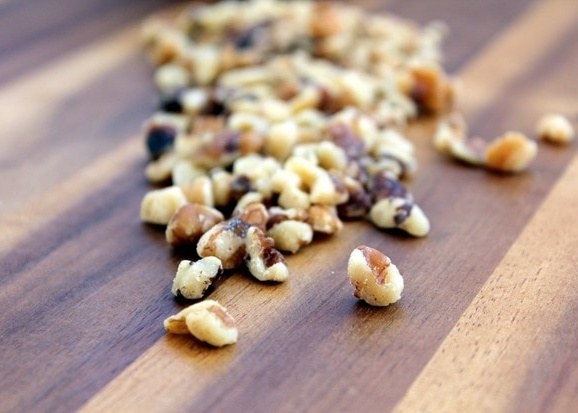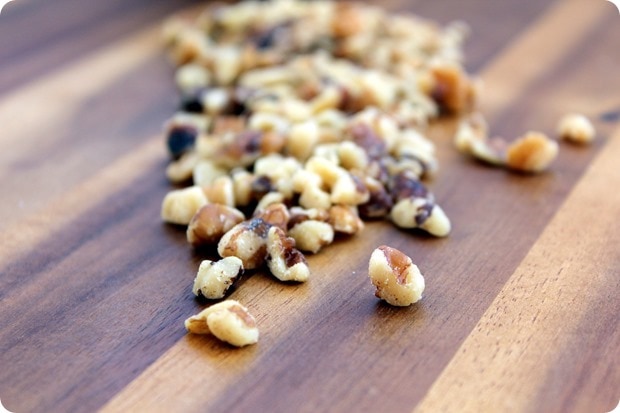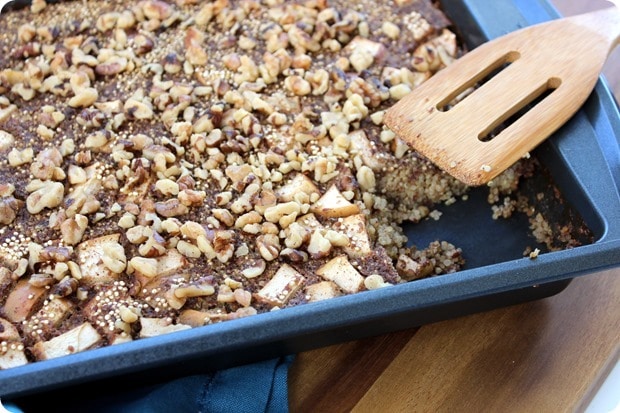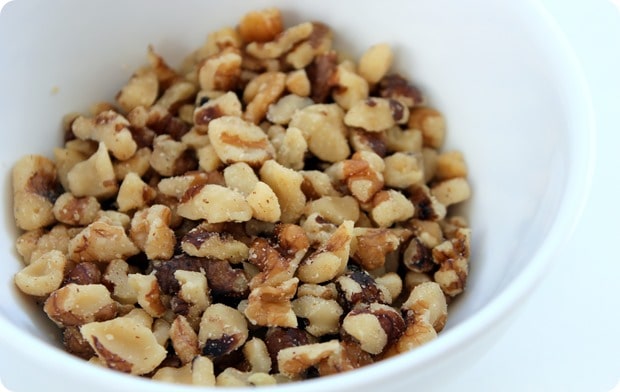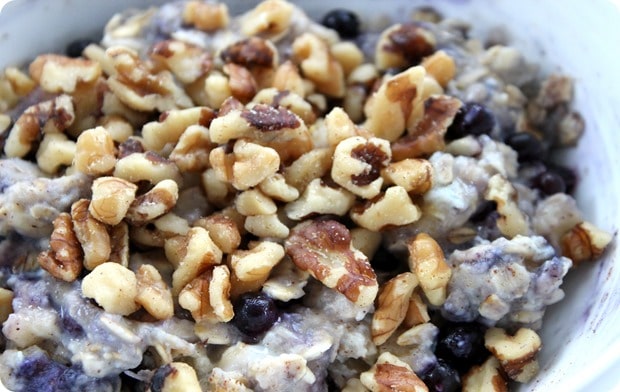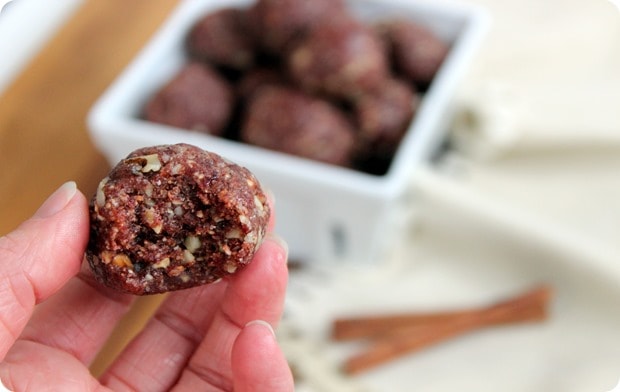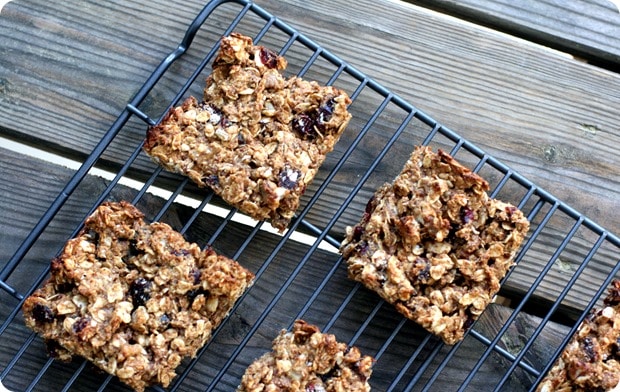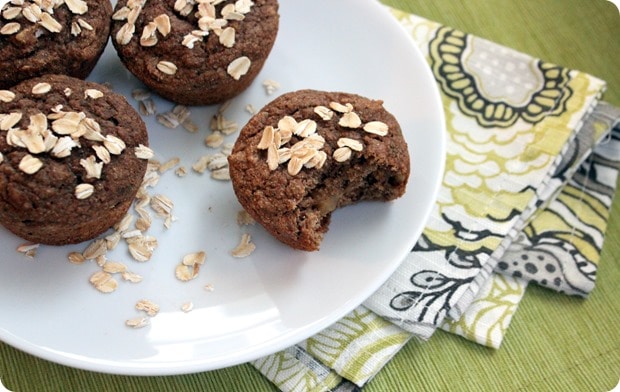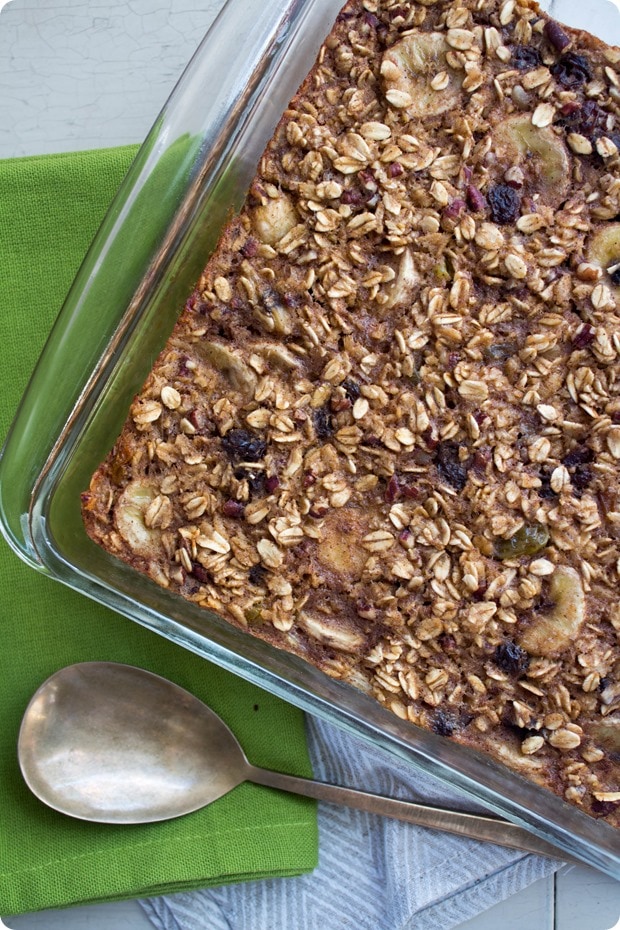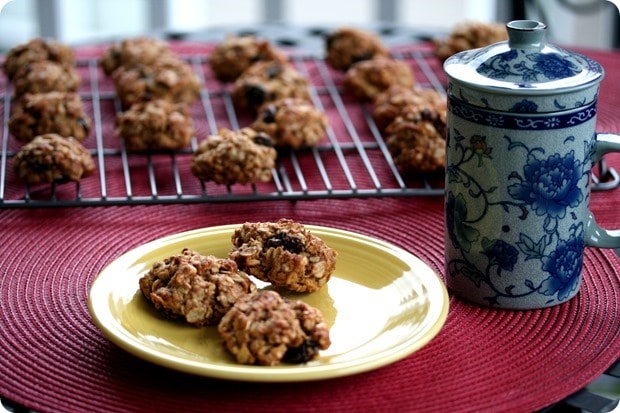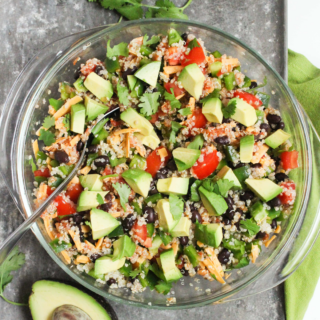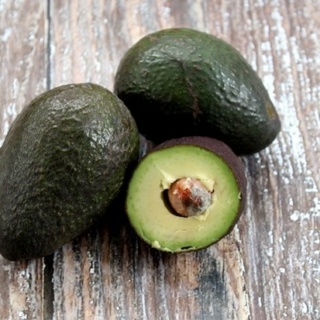Thank you to my friends at California Walnuts for sponsoring this post!
As a dietitian (and tasty food fan), I have a total crush on walnuts.
Not only are they delicious, and one of my favorite nuts, but they are also a nutritional superstar. More than two decades of research has shown that walnuts may help lower cardiovascular risk factors by decreasing LDL (bad) cholesterol by 9-16%, and diastolic blood pressure by 2-3 mmHg.
Why are walnuts so awesome? They are the only nuts that provide a significant source of omega-3 fatty acids, which have positive anti-inflammatory effects. In the U.S., we eat way too many omega-6 fatty acids, which are found in foods like vegetable oil (e.g. soybean, sunflower, corn, cottonseed, sesame oil, etc.), and not enough omega-3s, found in foods like walnuts and fatty fish. While walnuts do have omega-6s as well, the walnut ratio of omega-6 to omega-3 (about 4:1) is still a big improvement compared to other nuts (which don’t have much, if any, omega-3 at all, and still have a fair amount of omega-6, so the ratios are much higher).
Omega-6 fatty acids do have their own function, but in excess they can lead to inflammation in the body, particularly when their balance with the omega-3 fatty acid intake is off kilter. Between 1935 and 1939, the ratio of omega-6 to omega-3 fatty acids was reported to be 8.4:1; today, estimates of the ratio range from an average of 10:1 to 20:1, with a ratio as high as 25:1 in some.
What’s the problem with inflammation? It can be a factor in increased heart disease risk; in fact, elevated omega-6 intakes have been associated with an increase in all inflammatory diseases. The good news? Studies are showing that a lower ratio of omega-6 to omega-3 (so, more omega-3 intake and/or less omega-6) can reduce the risk of chronic diseases. Research has also found that omega-3 fatty acids may decrease the inflammatory market C-reactive protein (CRP) in those with high cholesterol. Nice!
A once ounce serving of walnuts will provide 2.5 grams of ALA, the plant-based short chain omega-3 fatty acid. This is good news for those of you who don’t eat (or don’t like) omega-3 packed fish!
Outside of the omega-3 situation, the fat in walnuts is also great for helping make meals more satisfying, and with improving the absorption of fat soluble vitamins like A, D, E, and K. So don’t be scared of fat, my friends!
In honor of all this awesomeness, and the fact that February is National Heart Month, here are some of my favorite heart healthy, walnut-packed recipes already here on the blog. You can find more information about walnuts, including their positive effects on the heart, at http://www.walnuts.org/.
Enjoy!
Perfect Microwave Banana Oatmeal
While walnuts aren’t technically part of this recipe, I really love topping my oats with walnuts! In addition to the omega-3s, one ounce of walnuts adds 4 grams of protein and 2 grams of fiber to the mix. Nice!
Tart Cherry Pie Snack Balls
(honorable mention: Oatmeal Raisin Energy Bites)
Vegan and Gluten Free Granola Bars
(honorable mention: Oatmeal Dark Chocolate Granola Bars)
Zesty Lemon Zucchini Muffins
(honorable mention: Fresh Cranberry and Walnut Pumpkin Bread)
Baked Apple Cinnamon Oat Bars
(honorable mention: Apple Walnut Crunch Spelt Muffins)
We’ll end with something sweet, but still healthy:
Gluten Free Chocolate Chip Cookies
What, you wanted a savory recipe, too? Okay, fine. 🙂 Here’s a lunchtime fave: Healthy Chicken Salad!
What’s your favorite way to enjoy walnuts? Clearly I especially love walnuts at breakfast, snack time, and in baked goods!


